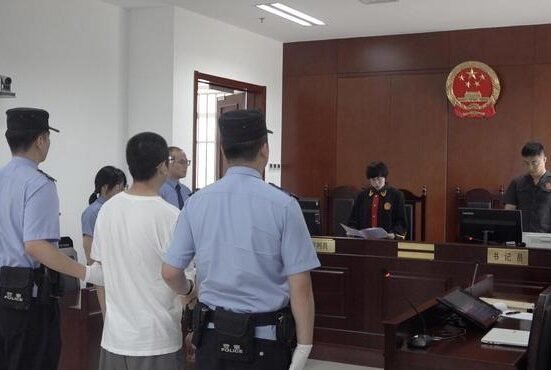
Trump’s auto tariffs to hit $460 billion of US vehicle, parts imports
As Donald Trump’s 25% tariff on U.S. auto imports kicks in, the levies look set to upend the industry. A Reuters calculation shows the duties will hit some $460 billion worth of cars and parts every year. The U.S. president says that will create jobs and boost the economy.
- Car shopping experts see heavy supplies of Ford and Stellantis vehicles at pre-tariff prices, plus a few foreign makes.
- Car dealers report heavy floor traffic in the last 10 days as people rush to buy new vehicles at pre-tariff prices.
- There are discounts and financing deals to be had on many models.
Want a new Ford F-150 or Ram pickup? Good news: Dealers have plenty in stock that you can still get at pre-tariff prices.
But if you want that Toyota RAV4 compact SUV or Corolla compact car, better hurry. You have about two weeks to get one now or pay more later. Car-shopping experts tell the Free Press the nationwide inventory for both vehicles are at about a 15-day supply.
Last month, many car dealers saw a rush of buyers flood stores trying to beat what is expected to be a boost in sticker prices once existing new vehicle supply evaporates and is replaced by vehicles subjected to tariffs — either because they are imported or because the parts used to assemble them in the United States come from overseas and are tariffed, pushing up prices. Experts have predicted tariffs will add anywhere from $1,000 to $20,000 to the price of a vehicle, depending on the make and its parts.
Dealers report that shoppers started streaming in during March to try to beat price hikes, and that shopping momentum has carried into this month.
“People that were on the fence, they’re coming out and buying and we’re running out of inventory rapidly,” said Wes Lutz, owner of Extreme Dodge Chrysler Jeep Ram in Jackson. “March was up over last year. This month we’ve got a good start because people are concerned about the tariffs and if they were thinking of getting something, they’re coming in now. We’re dealer trading. Most of our SUVs, which are what we sell mostly, are built in the U.S.”
Experts from Edmunds.com and CarGurus ran inventory figures for the Detroit Free Press. The data showed the most-available vehicles are Detroit Three models, especially the Ford Escape SUV, Jeep Grand Cherokee SUV and Chevrolet Silverado pickup. Some Asian makes are in good supply too, such as the Mazda CX-5 and Hyundai Elantra SUVs, and the Chinese-owned Volvo XC-40 luxury subcompact SUV.
Many carmakers are running deals on leases and purchases so they can move inventory fast. Ford Motor Co. and Stellantis, for example, are both offering employee pricing on many models. Experts say automakers are just as eager to sell down their pre-tariff stock as consumers are to buy them. For one thing, they need trade-ins as used car inventory lags. They also aim for consistent pricing once tariffs fully kick in.
“For them to get the non-tariffed inventory off the lot is crucial because you don’t want overlap and the same model competing against a tariffed vehicle,” said Ivan Drury, director of insights for the automotive research site Edmunds. “You don’t want dealers and consumers to have to contend with pricing when it’s not clear-cut. Also, context is king. It won’t hurt as much to know the customer next to you got the last non-tariffed one. You want to get that Band-Aid off quick. You gotta get rid of these things as soon as possible.”
When buyers should act
Kevin Roberts, director of economic and market intelligence at car shopping site CarGurus, estimates that consumers have about two months to find a good selection of new vehicles at pre-tariff prices. Of course that depends on the vehicle.
“A RAV4 — you probably have a week or two,” Roberts said. “Some of those vehicles with the higher day supply you might find them on lots for months to come. There are still vehicles in transit too that might bolster this inventory level we see.”
Drury and Roberts agree: The faster you act, the better the chance of finding the exact color and trim options you want at pre-tariff pricing.
“You don’t have to act immediately, but try to do it in the next few weeks versus months because it’s autos, right? So the sooner you act the better the chance you can get the features you want and the color. Otherwise, you end up back in the dealership a year later with a piece of negative equity on your hands,” Drury said. “We see it all the time. People trade in 1-year-old cars. It is horrible, the proliferation of negative equity was starting to happen again in the industry.”
Roberts added to get that affordable vehicle under $30,000, you many need to act sooner rather than later because fewer of those are available.
“And, if they are a lower volume vehicle, automakers might decide to not make them anymore,” Roberts said. “So act faster on those.”
What you can get now
CarGurus ran data on the non-U.S. built vehicles as of April 5 with the lowest and highest inventory on dealer lots, expressed in the industry as the days of supply dealers have. It found the following vehicles have the lowest supply nationwide, so if you want one, act fast:
Chevrolet Equinox, Kia K4, Chevrolet Trax, Honda Civic, Honda CRV and Volkswagen Tiguan. On the even tighter day supply end were the Subaru Crosstrek, Subaru Forester and Toyota RAV4.
Those non-U.S.-built vehicles with the highest inventory, giving you more time are: RAM ProMaster pickup, Mercedes-Benz Sprinter, Dodge Charger, Hyundai Elantra Hybrid, Kia Niro, Volvo CX-40, RAM 2500 and 3500, Honda Prologue EV, and Ford Bronco Sport.
Edmunds crunched the data slightly differently, not separating out the non-U.S.-built vehicles, given that most vehicles will likely be subjected to some form of tariff price hike due to the use of foreign parts. The Ford F-Series trucks, for example, are built in the United States, including in Dearborn, but some of its engines come from Canada or Mexico. In Edmunds’ data it found the highest day supply — vehicles with 59 days or more supply — as follows:
- Ford Escape
- Jeep Grand Cherokee
- Ford F-250 Super Duty
- Jeep Wrangler
- RAM 1500
- Ford Bronco and Bronco Sport
- Hyundai Santa Fe
- Kia Sportage
- Ford F-150
- Hyundai Palisade
- Chevrolet Silverado 1500
- Mazda CX-5
“These are nationwide, so it comes down to where you are located,” Drury said. “But if you want to go outside your area, that can sometimes work in your favor. In this case, time is of the essence. We’re going to get to that point — we’re not there yet — but it’s coming up pretty soon, where the tariffed vehicles will be the only one on the lot.”
Here are some of the deals
At the six stores the Tamaroff Group owns across Southfield and Roseville, business has been humming since last month, said Eric Frehsee, president of the Tamaroff Group. He said foot traffic has been up by 30% to 40% in the last 10 days compared with the same period a year ago.
“We’re seeing upwards of 50 people a day at a store,” Frehsee said, noting the usual count is about 35. “People are absolutely motivated to purchase. I’ve seen people with leases due to expire in the next three to six months pull them forward due to tariffs.”
The group sells Honda, Nissan, Kia and Acura brands. Frehsee said the stores have a total of 600 new vehicles in inventory. It usually sells about 500 new cars a month across the stores, so that means you have about a month to get the pre-tariff vehicles Tamaroff has in stock.
“Our brands have historically had a lower day supply over the last couple of months compared to the domestics, but the majority of our products are built in the United States,” Frehsee said, saying about 65% of the four brands he sells are made in America and the balance are imported from Mexico, Japan and South Korea. “Our manufacturers don’t fully know what that tariff impact (on prices) will be. There are so many unknowns yet.”
Frehsee said even his service lanes have been slammed as people rush to complete repairs before those prices rise due to tariffs on the foreign parts needed for repairs.
As for deals, Frehsee said the top sellers are the Honda CR-V SUV and its smaller sibling HR-V, both of which have good deals available. Of the 2025 all-wheel drive HR-Vs, he has 50 in stock. He said Honda is offering a lease special of $329 a month with zero down for 36 months on the HR-V, for example.
Nissan has a lease on the 2025 Rogue SV all-wheel drive SUV for $359 a month with zero down for 39 months, Frehsee said. At Kia, the new K4 sedan is leasing for $265 a month with $265 due at signing for 36 months. None of those prices include taxes and fees, he said.
If leasing is not for you, Kia is offering 3.99% financing on the K4 and Honda is offering that same rate on the HR-V. He has some used Nissan vehicles at 0.9% financing.
At Extreme Dodge Chrysler Jeep Ram in Jackson, Lutz said Stellantis is “very aggressive” with incentives and has lowered the manufacturer’s suggested retail prices on several models. The bulk of what he sells are Jeeps and Ram pickups, which he has plenty of “in the pipeline.”
“We’ve got a great lease on the Wagoneer S, we’re doing well with that car. It’s all electric,” Lutz said. “We’re selling that vehicle.”
Larger dealerships have flexibility
While smaller dealerships may struggle to maintain pre-tariff inventory levels, larger dealership groups likely have an advantage.
Among its 43 dealership locations, the LaFontaine Automotive Group has about 8,400 new vehicles and 3,000 used — more than enough to weather a short-term storm, according to Max Muncey, the group’s senior manager of corporate communications.
“It will take a large dealer group to navigate this. We don’t have all our eggs in one basket,” he told the Free Press. “If one brand is faltering, we have an uptick in another brand.”
Concerns vary from brand to brand, sometimes day to day. The news that Ford and Stellantis would honor employee pricing came as a relief, he said, as was the decision Mercedes-Benz announced to maintain pricing through 2025.
Another advantage is the group’s cross-selling strategy. Muncey said salespeople working with customers seeking specific models that aren’t available because of tariff constraints can suggest comparable inventory — even if it’s not from the same brand.
If a customer can’t get into a Silverado, for example, the Chevrolet salesperson, “can pull payments on an F-150 and a Ram,” Muncey said. “As long as they have a good relationship with the customer, that’s your car guy or gal, regardless of make or model.”
In addition to securing new-vehicles inventory, the LaFontaine group is leveraging its COVID-19 playbook for acquiring used models. For dealer trades, the group is proactively purchasing vehicles from smaller dealerships in smaller markets or is asking for more options when trading with other Michigan dealers.
The group institutes a $250 incentive on curbside acquisitions as well, Muncey said, wherein salespeople get the finder’s fee if they send in leads on vehicles for sale in people’s driveways, or for spotting cars on Craigslist or Facebook Marketplace. Prior to the pandemic, LaFontaine held on to about $30 million in used-vehicle inventory. Today, it’s around $80 million.
“It’s an all hands on deck,” Muncey said.
Consumers will once again be flexible
So far, Ferrari appears to be the only automaker to say it will be raising its prices by a specified amount: a maximum of 10% on all models imported to the United States after April 2, according to Reuters. Ferrari manufactures all its cars at its Maranello facility in northern Italy. Others have not yet provided insight into what they will do with pricing or when.
CarGurus analysis has estimated tariffs will add about $3,300 to the average list price, pushing it up to about $52,800, Roberts said. He said until that happens, anyone who is in the market for a new car might get deja vu to the COVID-19 years that lead to a shortage of chips used in vehicles, which created a yearlong drought in new-car inventory.
“For consumers, we learned to be really flexible during the COVID years and the chip shortage. I think it’ll be a similar situation with the tariffs,” Roberts said. “Do you want those trim and feature options? Previously, if you wanted those, you paid a higher price. Effectively, it’ll become, as we balance out this pre-tariff inventory versus post tariff inventory, how bad do you want the heated seats? It may become that cost-benefit analysis for customers.”
Jamie L. LaReau is the senior autos writer who covers Ford Motor Co. for the Detroit Free Press. Contact Jamie at jlareau@freepress.com. Follow her on Twitter @jlareauan. To sign up for our autos newsletter. Become a subscriber.







